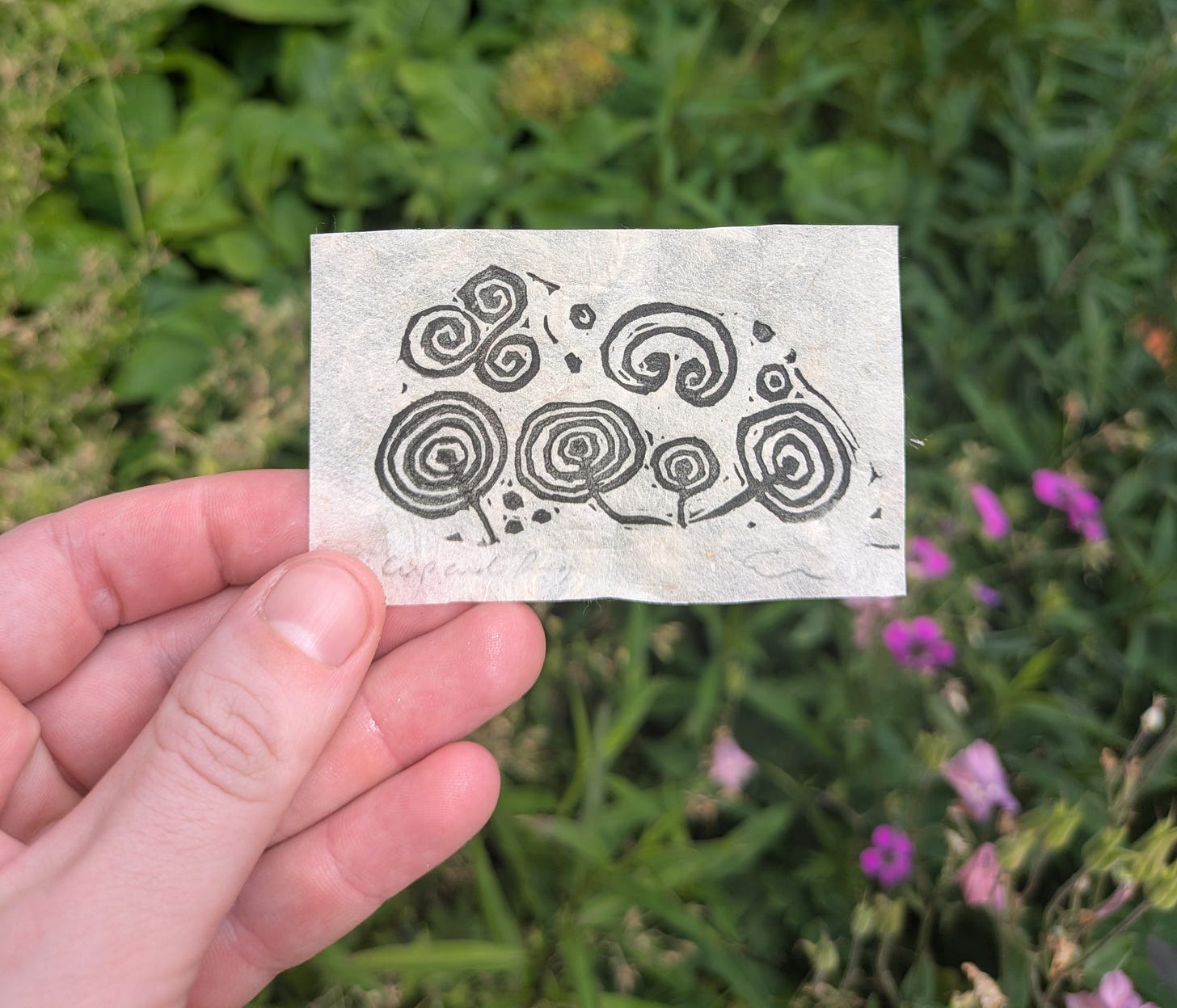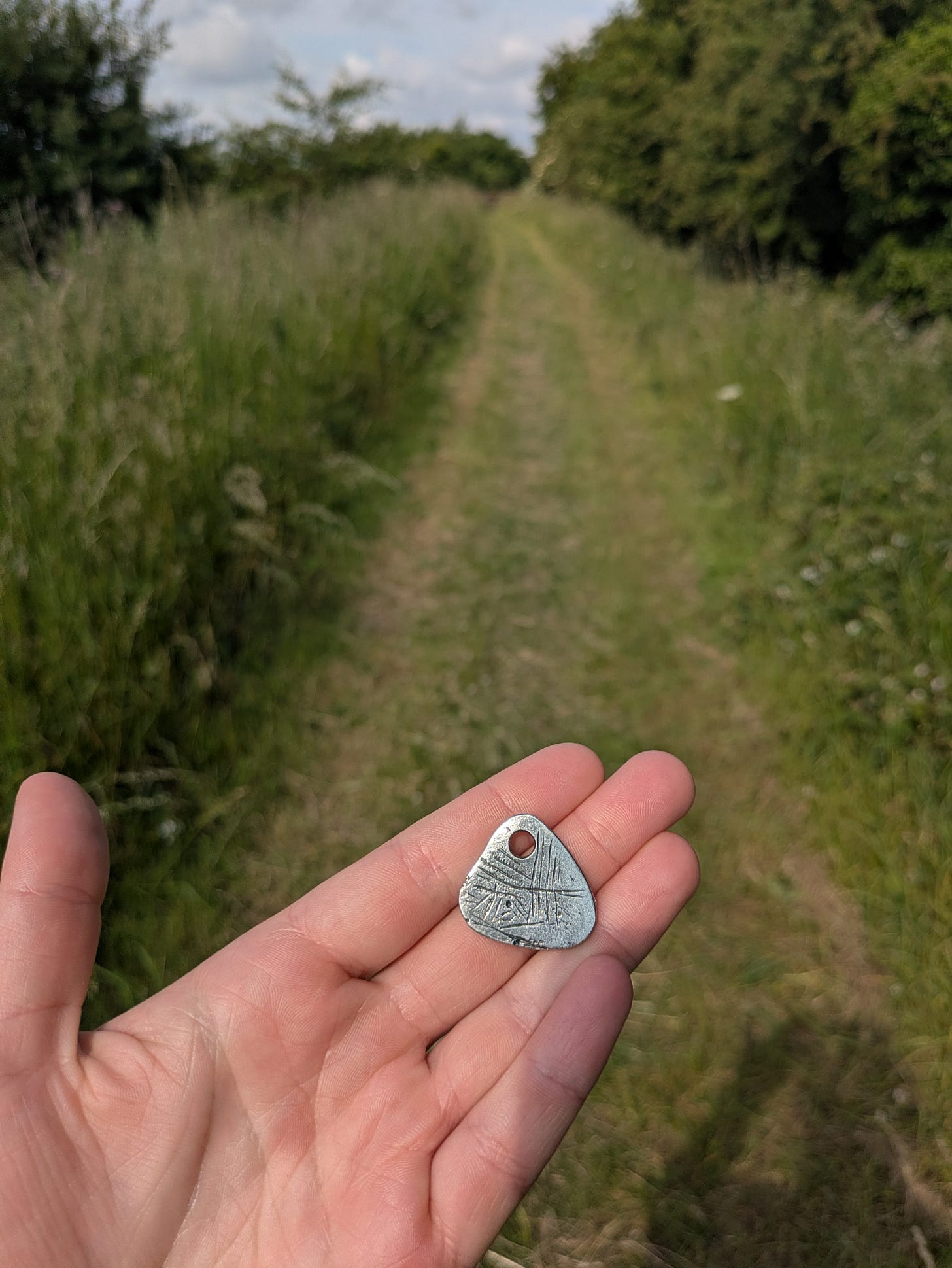At the beginning of June, my partner and I went on a tour of Medieval mason marks in York, as part of the York Festival of Ideas. We were shown round the Fishergate Postern Tower with torches, looking for scratch marks resembling a GPS arrow, crosses and ogham letters. What I loved about it was seeing these marks made by normal people, marks made not for decoration, but in order to be paid for the stone they had just cut. It was a direct connection from me standing there to the person who scratched the mark hundreds of years before me, and it made me think more deeply about the marks people have left behind on stone. Madeline Pelling writes in her book on graffiti in the 18th century that marks on the walls are human traces of the past and show our compulsion to leave a trace of ourselves. These marks can be records of our lives (births, deaths and variations on the classic ‘so and so woz ‘ere’), forms of protection such as witch marks or practical markings like the mason marks.
An article I read by Thomas Heyd discusses the various ideas of what different pieces of rock art could mean. Whether they are maps of the landscape, depictions of astronomical observations or ritualistic in some way. (There are some Neolithic lunar maps in Knowth, Ireland that I would love to see, evidence, perhaps, of our enduring love of the moon). But my favourite part of the article was where he talked about the changing meaning of these marks. How people have encountered the symbols carved into the stone and interpreted them with the perspective of their experiences and beliefs, conjuring up folk tales and legends to explain these strange marks. I used to seek out the rock art on the moors near my old house, and The Tree of Life stone on Askwith Moor was one of my favourites. The name of the Tree of Life stone is an excellent example of people later interpreting and probably changing the meaning of the stone. We cannot know why it was originally carved but it does look a lot like a tree, so this new meaning has taken hold. This also resonated with me after my time at the mason mark tour, speaking to an ex-stone mason who showed us his binder of mason marks he had collected from churches around the North East. These quick, practical marks have become something else to this mason, a way of connecting with his predecessors and the people behind the grand cathedrals and churches. After the tour, we walked past the Minster and spied through the fence to the piles of freshly carved stone that the modern masons have worked on. There you can see their own marks (my favourite made me think of a sunrise behind a mountain). This could be seen as another effort to connect to their predecessors, as they no longer need to make marks in order to be paid, but also a way of them leaving their own marks for future generations.
I couldn’t write about marks on stone without thinking of the Star Carr pendant, which I have written about before, but it still amazes me to see the tiny lines etched onto the shale about 11,000 years ago. Recently, I drove across what would have been Lake Flixton, where the Star Carr site was discovered, my replica of the pendant in my pocket. When I trace the lines on my replica I think of these people, living in what would have been a very different landscape. Whilst we don’t know what the pendant meant to the people who made those marks, it still, once again, connects us to them in a tangible way.
Heyd talks about the way that rock art shows a rootedness in a landscape, and that some places are infused with meaning, and I think this remains true regardless of how you interpret the stones. I think of a modern example, the stone I came across near Coldstones Cut in Nidderdale which had the word ‘REST’ carved onto it. I always sit and look out over Nidderdale, taking advice from the stone and resting for a while. I have already taken on my own meaning from the stone, and I wonder how those who encounter it in the future will change it’s meaning again.
Footnotes
Heyd, Thomas (1999) “Rock Art Aesthetics: Trace on Rock, Mark of Spirit, Window on Land.” The Journal of Aesthetics and Art Criticism (Vol.57, No. 4), pp. 451–58.
Writing on the Wall: Graffiti and Rebellion in Eighteenth-Century Britain by Madeline Pelling
Star Carr: A Persistent Place in a Changing World by Nicky Milner, Chantal Conneller and Barry Taylor.
I recommend the Megalithic Portal if you want to find rock art near you!
If you enjoy my work, and would like to support my writing, the link to my Ko-Fi is here.






Really love everything about this! Thank you for sharing!